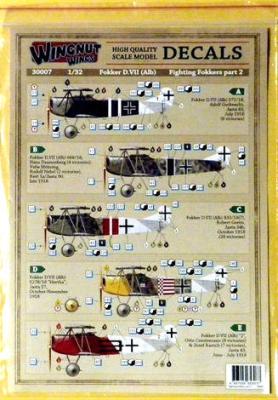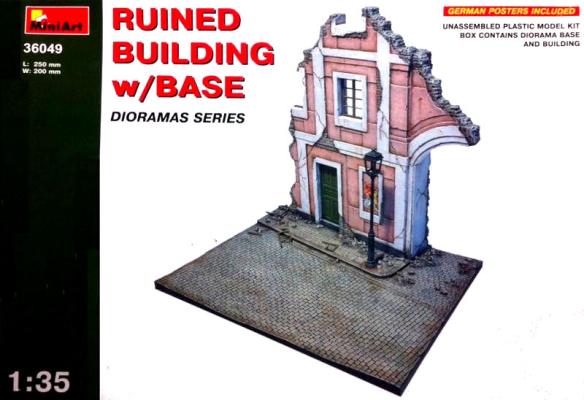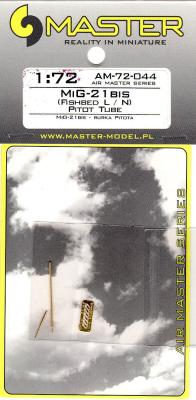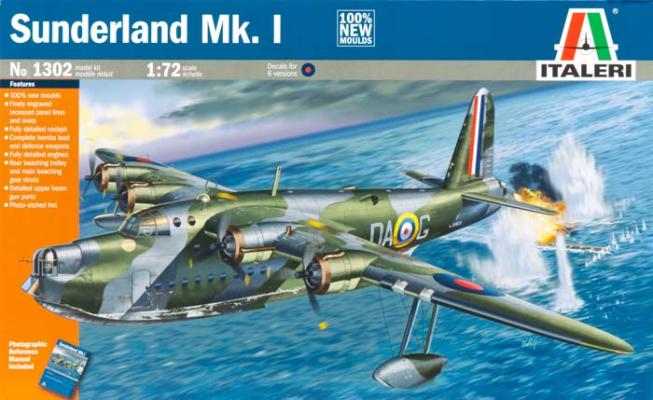This is the second decal set released by Wingnut Wings with alternate markings for their new 1/32 Fokker D.VII kits. As noted in my review of Fighting Fokkers part 1, Fokker D.VII fighters were built by three manufacturers: Fokker, Albatros, and OAW, and this set (#30007) provides the unique markings for five of the Fokker D.VII fighters that were built by the Albatros…plus two bonus D.VIIs (as described below).
Welcome to the IPMS/USA Reviews site!
Introduction: The primary organization of the IPMS/USA Review website is by IPMS/USA National Contest Class. Within each Class there are sub-menus by kits, decals, books, etc. The Miscellaneous Class is for items that are not class specific or that cross two or more classes.
IPMS/USA Members: We encourage you to submit reviews, both here and to the Journal. To volunteer for membership in the IPMS/USA "Reviewers Corps" and submit your own reviews, please read the Guidelines For Submitting Product Reviews.
Manufacturers, publishers, and other industry members: IPMS/USA is pleased to offer your company the opportunity for product reviews. All product reviews are performed by IPMS/USA members, and are posted in the publicly-accessible section of our website. With very few exceptions, we perform full build reviews of new kit releases, aftermarket products, and supplies. If you would care to provide product samples for review, please contact John Noack, IPMS/USA 1st VP.
To learn more about IPMS/USA, please see our About Us page.
The Parts
Upon opening the box, the modeler will find two frets of detail parts, six vacuformed parts which assemble into the ruined building, and one part, the base, representing the street, sidewalk, and a small pile of rubble that fell from the building in the process of becoming…ruined.
The detail parts are injection molded. Included in the detail parts are parts for:
- A short length of wrought-iron fence (not shown on the box art)
- A street lamp (visible on the box art)
- A main door and framing parts for the door frame (visible on the box art)
- Set of window frames, window shutters, and framing materials for the windows
MiniArt usually includes detail parts that are generic in nature and can be added to other structures, or added to the simulated pile of debris on the base.
Product / Stock #s:
- AM-72-044 – MiG-21 BIS (Fishbed L/N) – $7.00
- AM-72-045 – MiG-21 F-13 (Fishbed C) – $7.00
- AM-72-047 – MiG-21 U, US, UM (Mongol) – $7.00
As I have mentioned previously, the MiG-21 is one of my favorite aircraft to model. Also, I have been impressed with the products from Master Model and jumped at the chance to review their latest pitot tubes for various MiG models. This review covers three different pitot tube sets that differ primarily in their length. They all feature pitot tubes with small vanes near the tip to measure angle of attack and yaw. The fronts of the pitots, where the vanes mount, are all similar.
When I first heard this was coming out, I just couldn’t wait. It is such a unique and interesting piece of US military history, and personally one of my favorite tanks ever built. When it was announced that IPMS had received one for review, I was certain it would be requested instantly. Now, whether it was overlooked, or whether everyone simply wasn’t as eager as me to build this beast of a kit (or didn’t have the space to display it), it hadn’t been claimed. So I jumped at the chance to review it. Oh, what a build I was in for…
History
The Sunderland prototype first flew on October 16th, 1937, and the first of the production Sunderlands flew on April 28th, 1938. Production started in 1938 and was ended after 8 years. 777 Sunderland’s of all variants were built, and it served in the RAF from June, 1938 ,to May, 1959! Twenty-one years in frontline service for the RAF, and even later for France and New Zealand. (The last New Zealand Sunderland was retired in 1965!!) The Mk I was 85ft 8in. long and had a wingspan of 112ft 8in. Weighing in at 44,600lbs, it was powered by 4 Bristol Pegasus XXII engines rated at 1010hp each, allowing for a top speed of 210mph at 6500 ft.(cruising speed was 178mph). The Sunderland could fly over 1700 miles and was equipped with a galley, bunks, a sink for washing up (with a 25 gal. tank), and a proper, flushing toilet with a supply of water in an 11 gallon tank!















